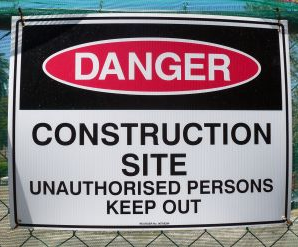 The Occupational Safety & Health Administration (OSHA) classifies construction as a “high-risk” industry. Compared to other industries, construction workers are more vulnerable to serious injury. Because of this, it’s imperative that each and every worker understand the importance of construction safety checks.
The Occupational Safety & Health Administration (OSHA) classifies construction as a “high-risk” industry. Compared to other industries, construction workers are more vulnerable to serious injury. Because of this, it’s imperative that each and every worker understand the importance of construction safety checks.
Walk-Around Inspections
Each employee should have a walk-around inspection checklist. This checklist should be completed at the beginning of an employee’s shift, to ensure that their tasks are completed in the safest environments.
Everyone’s walk-around inspection will the different. For instance, a forklift operator will need to walk around and inspect his vehicle, while a construction manager will be responsible for doing an overall jobsite safety inspection.
Here are some examples of what could be on an inspection checklist:
- Ensure everyone is wearing the right safety gear: goggles, helmets, etc.
- Determine that all work areas are clean
- Determine that all exits are properly labeled, and that all emergency exit plans are hung in highly visible areas
- Flammable liquids, and other hazardous materials, should be properly stored
Accident Prevention Plan
In 2012, there were 3,945 work related fatalities, and 775 of these were in the construction industry. OSHA warns that falling is extremely dangerous on construction sites, as the majority of construction industry deaths were from fatal falls. Moreover, being struck by an object, electrocuted, or caught by an object are also responsible for a high number of fatalities. Regular safety meetings will help ensure that construction workers are well-versed on accident prevention. It’s important that all employees understand your accident prevention plan, as well as how to behave in an emergency.
Fall Protection Plan
OSHA recommends a Fall Protection Plan, tailored to individual jobsites, to help ensure construction workers are using safety practices. Require your employees to review, and sign-off on, the protection plan before entering the jobsite. This should help to reduce jobsite accidents, as the safety information will be fresh in your worker’s mind.
The protection plan requires a signature, and includes the following sections:
- A statement of company policy
- Fall protection systems to be used on the jobsite, including: how to identify the safety monitor and recognition of the fall hazards
- How the protection plan will be implemented, meaning: what hazards are there and what safety equipment will be used
Enforcement
Construction sites that neglect to enforce safety will end up fined by OSHA. OSHA enforces and regulates safety, and being found guilty of workplace violations could result in hefty fines, and/or your jobsite being temporarily, or permanently, shut down. In general, serious violations will cost around $1000, but most fines are applied on a case-by-case basis.
Safety Standards
It’s essential to set precedence, especially on the jobsite. Reprimand safety violators with serious punishments. Your employees need to understand your dedication to safety, so set the standard. Overall, it’s recommended to inspect your site daily, as well as have regular meetings to ensure safety standards are being met.
Safety checks are an important part of any work site, including construction. Often these checks are recorded on paper-based systems that are difficult to save, search, report on and maintain for safekeeping. Cloud-based tools like Pacific Timesheet safety checks and logs can address these issues.
by Jenny Rollo, http://www.sxc.hu/photo/709062




